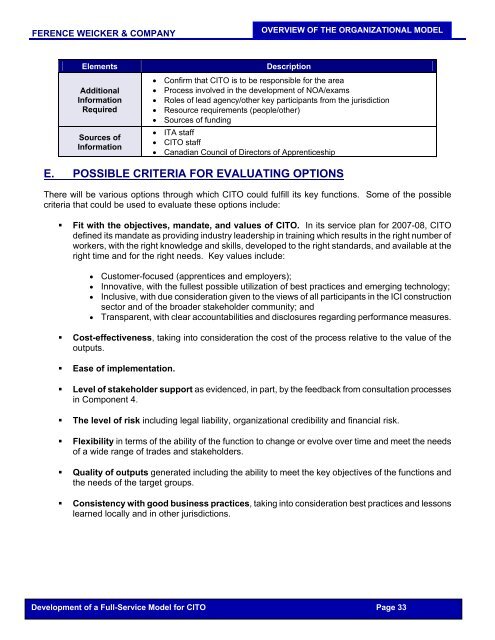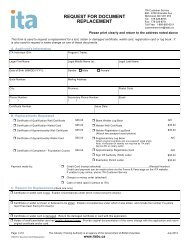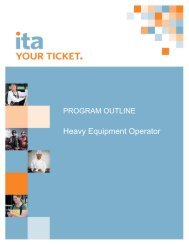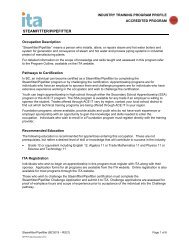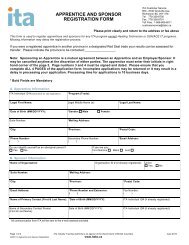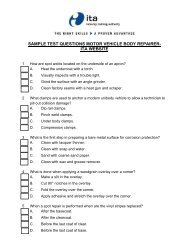CITO - Phase I Report - Industry Training Authority
CITO - Phase I Report - Industry Training Authority
CITO - Phase I Report - Industry Training Authority
You also want an ePaper? Increase the reach of your titles
YUMPU automatically turns print PDFs into web optimized ePapers that Google loves.
FERENCE WEICKER & COMPANY<br />
Elements Description<br />
Additional<br />
Information<br />
Required<br />
Sources of<br />
Information<br />
OVERVIEW OF THE ORGANIZATIONAL MODEL<br />
• Confirm that <strong>CITO</strong> is to be responsible for the area<br />
• Process involved in the development of NOA/exams<br />
• Roles of lead agency/other key participants from the jurisdiction<br />
• Resource requirements (people/other)<br />
• Sources of funding<br />
• ITA staff<br />
• <strong>CITO</strong> staff<br />
• Canadian Council of Directors of Apprenticeship<br />
E. POSSIBLE CRITERIA FOR EVALUATING OPTIONS<br />
There will be various options through which <strong>CITO</strong> could fulfill its key functions. Some of the possible<br />
criteria that could be used to evaluate these options include:<br />
� Fit with the objectives, mandate, and values of <strong>CITO</strong>. In its service plan for 2007-08, <strong>CITO</strong><br />
defined its mandate as providing industry leadership in training which results in the right number of<br />
workers, with the right knowledge and skills, developed to the right standards, and available at the<br />
right time and for the right needs. Key values include:<br />
• Customer-focused (apprentices and employers);<br />
• Innovative, with the fullest possible utilization of best practices and emerging technology;<br />
• Inclusive, with due consideration given to the views of all participants in the ICI construction<br />
sector and of the broader stakeholder community; and<br />
• Transparent, with clear accountabilities and disclosures regarding performance measures.<br />
� Cost-effectiveness, taking into consideration the cost of the process relative to the value of the<br />
outputs.<br />
� Ease of implementation.<br />
� Level of stakeholder support as evidenced, in part, by the feedback from consultation processes<br />
in Component 4.<br />
� The level of risk including legal liability, organizational credibility and financial risk.<br />
� Flexibility in terms of the ability of the function to change or evolve over time and meet the needs<br />
of a wide range of trades and stakeholders.<br />
� Quality of outputs generated including the ability to meet the key objectives of the functions and<br />
the needs of the target groups.<br />
� Consistency with good business practices, taking into consideration best practices and lessons<br />
learned locally and in other jurisdictions.<br />
Development of a Full-Service Model for <strong>CITO</strong> Page 33


